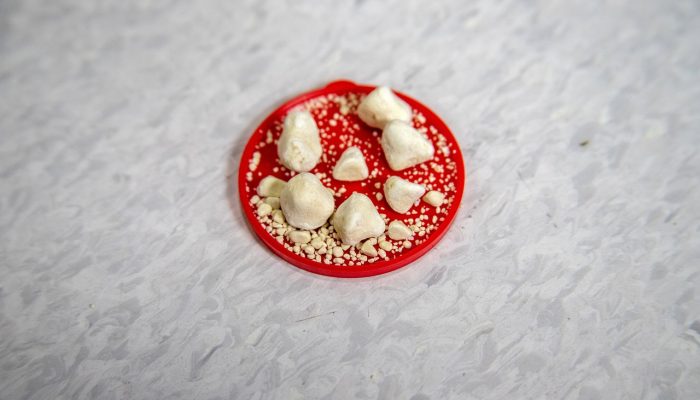Introduction
For anyone interested in women’s health and homeopathy, three organs come up again and again: the thyroid, the liver, and the uterus. They aren’t separate players but part of the same orchestra, keeping the rhythm of metabolism, detoxification, fertility, and the menstrual cycle in tune, what many refer to as ‘the feminine divine’.
When things go out of balance, the effects ripple across all three. A sluggish thyroid can drag the liver down. A stressed liver can leave the uterus struggling with hormone overload. And the uterus, with its monthly rhythm, will often be the first place those hidden strains show themselves.
This article explores that interplay: how these organs influence one another; what modern statistics tell us; and how homeopathic understanding can deepen both diagnosis and treatment, while honouring the sacred feminine.
Integrated Feedback Loops & the Feminine Cycle
These organs are not isolated; imbalance in one tends to ripple through the others. For example, a woman with subclinical hypothyroidism may develop subtle liver enzyme changes, which then alter hormone metabolism, affecting uterine lining, cycle regularity, pain, mood, fertility.
From a homeopathic (and more generally holistic) perspective, these interconnections are also viewed in the light of vitality, rhythm, and the feminine divine: the menstrual cycle is sometimes regarded as sacred, a rhythm of renewal; disturbance in that rhythm is not merely “disease” but a signal, a messenger of deeper imbalance.
The Thyroid, Liver, and Uterus: Physiological Interconnections
Before exploring the homeopathic perspective, it is helpful to briefly review how these organs interact in standard physiology.
Thyroid & Liver
- The liver is heavily involved in converting thyroid hormones (the inactive T4 into the active T3), in inactivating excess hormone, and in the transport of these hormones bound to carrier proteins. Conversely, thyroid hormones have effects on hepatic metabolism, including lipid regulation, enzyme activity, and detoxification pathways. PubMed+1
- When thyroid function is too low (hypothyroidism), the metabolic slowdown can lead to hepatic steatosis (fatty liver), elevated liver enzymes, changes in lipid profiles, and other downstream hepatic stress. In hyperthyroidism, there can be oxidative stress, cholestatic changes, and sometimes even a mild hepatocellular burden. PubMed
Thyroid & Uterus (Reproductive System)
- Thyroid disorders have well-documented effects on the hypothalamic-pituitary-gonadal (HPG) axis. Disturbances may lead to irregular ovulation, changes in menstrual cycle length, fertility issues, increased risk of miscarriage, poor pregnancy outcomes. MDPI+2Oxford Academic+2
- Hypothyroidism tends to be associated with heavy, prolonged, or more frequent bleeding (menorrhagia, polymenorrhea), and hyperthyroidism with lighter, less frequent menstruation or sometimes amenorrhea. MDPI+2Oxford Academic+2
Liver & Uterus
- The liver is vital in metabolising sex steroids (oestrogen, progesterone, androgens), detoxifying them, conjugating them for removal. If liver function is compromised, hormone balance can shift, leading to higher circulating levels of certain hormones (e.g. oestrogen), which may manifest in heavier bleeding, fibroid growth, endometriosis, or more severe premenstrual symptoms. Fibroid Fighters+1
- Studies also show that elevated liver enzymes (markers of reduced hepatic function) correlate with increased odds of menstrual irregularities. Korean Journal of Family Medicine

What the Statistics Tell Us
Statistics help ground the discussion in what is observed clinically at scale, even though each person is unique (a homeopathic principle).
- In the UK, hypothyroidism affects about 1–2% of the population; women are about 10 times more likely than men to have it. Thyroid UK -+1
- Treated hypothyroidism in Britain rose from 2.3% (~1.4 million people) in 2005 to 3.5% (~2.2 million) by 2014, and projections suggest it may rise further to ~4.2% by 2025. PubMed
- Women are 3-5 times more likely than men to be treated for thyroid disorders. MDPI+1
- One UK study of nearly 1,200 thyroid patients found that on average it took 4.5 years to secure a diagnosis. Even after treatment, more than 90% still reported symptoms. University of Aberdeen
- Studies from elsewhere: in a Korean national sample of premenopausal women (~34 years old), approx 14.4% reported menstrual cycle irregularity; those in the highest quartiles for ALT or AST (liver enzymes) had significantly higher odds of irregular cycles (adjusted OR around 1.8 for ALT, 1.67 for AST). Korean Journal of Family Medicine
A cohort of ~72,000 women under 40 in another study found that about 28% had long or irregular menstrual cycles; ~7-9% developed non-alcoholic fatty liver disease (NAFLD) over follow-up. Endocrine Society
These statistics confirm what many homeopathic practitioners observe: that thyroid disorders are common (especially among women), that liver health and menstrual function are associated, and that cycles are disturbed often (whether overtly or sub-clinically) in ways that standard medicine may sometimes under-assess.
Homeopathic Understanding & Treatment: Beyond the Physical
In homeopathy takes into account not only physical symptoms but the life rhythms, emotional expression, and subtle energetic signs that reveal how the thyroid, liver, and uterus interact in an individual. Some keyly relevant aspects:
Lifestyle & Support: Since the liver is central in processing hormones and toxins, homeopathic care often includes dietary and lifestyle supports: ensuring gentle detoxification (not harsh), good quality fats, avoiding endocrine disruptors, managing stress (since cortisol, insulin etc. affect all three organs), adequate sleep, movement. Especially important is listening to one’s cycle: respecting rest in luteal phase, honouring menstruation without suppressing it, attending to emotional needs.
Vital Force & Rhythmic Balance: The feminine divine can be thought of as the archetype of rhythm: monthly cycles, seasons, lunar cycles, ebb and flow of energy. When the thyroid is underactive, the energy slows; when liver detoxification is weak, accumulation (of toxins, of unprocessed hormones) happens; the uterus then reacts, either over-accumulating lining (heavy periods), failing to shed cleanly, or failing to establish a regular cycle.
Miasmatic Patterns & Autoimmunity: Many thyroid issues are autoimmune (e.g. Hashimoto’s, Graves’). Autoimmunity often indicates deeper systemic imbalance, sometimes in life history, diet, mental-emotional stress. The liver, in homeopathic vision, also is a filter, not only of toxins but of emotional and symbolic “toxins” (resentment, unexpressed grief, etc.). Addressing these through remedy selection, constitutional prescribing, and supportive measures can help.
Remedy Work on the Triad: Remedies may be chosen that have known affinity for the thyroid, liver, or uterus; for example, thyroid remedies (Lycopus, Baryta iodata, Iodum etc.), liver remedies (Chelidonium, Carduus marianus, Lycopodium etc.), uterine remedies (Sepia, Pulsatilla, Cimicifuga etc.). The skill comes in matching the symptoms (physical, mental, emotional) and seeing which organ is invited to lead the healing, or where the block is.
Honouring the Feminine Divine: Symbol, Ritual, Respect
For those who see the feminine divine not just as metaphor but as lived reality, there are ways to weave this into therapeutic practice:
- Menstrual Awareness & Ritual: Encouraging patients to chart not just bleed, flow, or pain, but emotional states, dreams, energy, creativity, intimacy. Seeing menstruation as a time of involution, of letting go, a kind of sacred rest rather than simply a problem to fix.
- Voice & Autonomy in Treatment: Many women report not being heard, especially regarding thyroid symptoms, fatigue, emotional shifts. Homeopathic practice’s ethos of deep listening offers space for these voices.
- Myth, Symbol, and Inner Work: Encouraging reflection on archetypes: Maiden, Mother, Crone; cycles of fertility and menopause; inner symbolic meaning of heaviness (in liver, uterus) or coldness (in thyroid), the letting go. Such inner work can synergise with homeopathic remedies.
Case Examples & Considerations
To illustrate, consider two hypothetical cases (drawn from composite real-practice experience):
- Case A: A woman, mid-40s, with sluggish thyroid symptoms (cold intolerance, weight gain, low mood), heavy irregular period, some liver enzyme elevation. She reports feeling “stuck”, carrying emotional burdens. Remedies selected include thyroid‐affinitive remedy, liver tonic, plus constitutional remedy; lifestyle supports: reduction of processed food, gentle fasting, herbal liver support; emotional work to release bitter resentments. Over 3-6 months, the cycles become lighter, mood lifts, thyroid labs improve, energy returns.
- Case B: A younger woman, late 20s, with hyperthyroid symptoms (racing heart, anxiety, weight loss), scanty periods or amenorrhea, poor liver detox (occasional jaundice, skin sensitivity), history of over-exercise. Here the remedy work might include nervine, liver remedies, attention to restoring balance, reducing stress, restoring rest, accepting limits. The uterus responds (periods return), thyroid calms, and there is an inner experience of returning sovereignty over her cycle.
Considerations: always check standard medical labs (TSH, free T4/3, liver function tests), screen for structural uterine issues (fibroids, endometriosis). Be alert to heavy bleeding’s risk of anaemia, thyroid autoantibodies’ risk in pregnancy.
Integration: How Homeopathy Complements Conventional Medicine
Homeopathic practice does not need to exist in opposition to conventional endocrinology or hepatology or gynaecology; rather, it can complement:
By helping in menstrual disorders that resist easy conventional therapy, especially when underlying liver detoxification, thyroid balance, or emotional stress are unaddressed.
By identifying subclinical symptoms early (before labs become grossly abnormal), prompting conventional intervention or lifestyle change sooner.
By supporting patients’ vitality and quality of life even when standard therapy is required (for instance, when levothyroxine is prescribed), helping reduce side effects, emotional burden, sleep disturbance, mood.

Summary & Practical Tips
To wrap up, hormonally sensitive individuals might consider:
Ritual and symbolic work where patient is open: celebrations of bleeding, rest, release; inner mythic work; connecting the physical sensation to inner spiritual meaning if that resonates.
Routine evaluation of thyroid function, liver enzymes, menstrual history, cycle charting as part of case taking.
Constitutional remedy work that considers the pattern of thyroid + liver + uterine symptoms, not treating each in isolation.
Supportive lifestyle measures: diet, rest, stress reduction, avoiding endocrine disruptors, supporting liver detox gently.
Encouraging cycle awareness: letting the menstrual cycle be a guide, an ally, not an adversary; observing emotional, creative, energetic rhythms.

Final Thoughts
The thyroid, liver, and uterus form a powerful triad, deeply tied to women’s health and wellbeing. Disturbances are common, yet often overlooked or under-treated. The medical statistics show how common disruptions are; the physiological science maps the mechanisms; and homeopathy provides tools not only to relieve symptoms but to help restore balance and dignity.
And in doing so, it honours something bigger: the rhythm of the feminine itself the cycles of energy, renewal, and release that are too often undervalued in modern life.
Our reading room’s an opportunity to have personal time browsing our shelves full of wisdom.
The Helen Campbell Homeopathy Foundation SCIO is a registered educational charity focused on sharing homeopathy’s fascinating history and wonderful wisdom. We’re here to inform, not prescribe!





